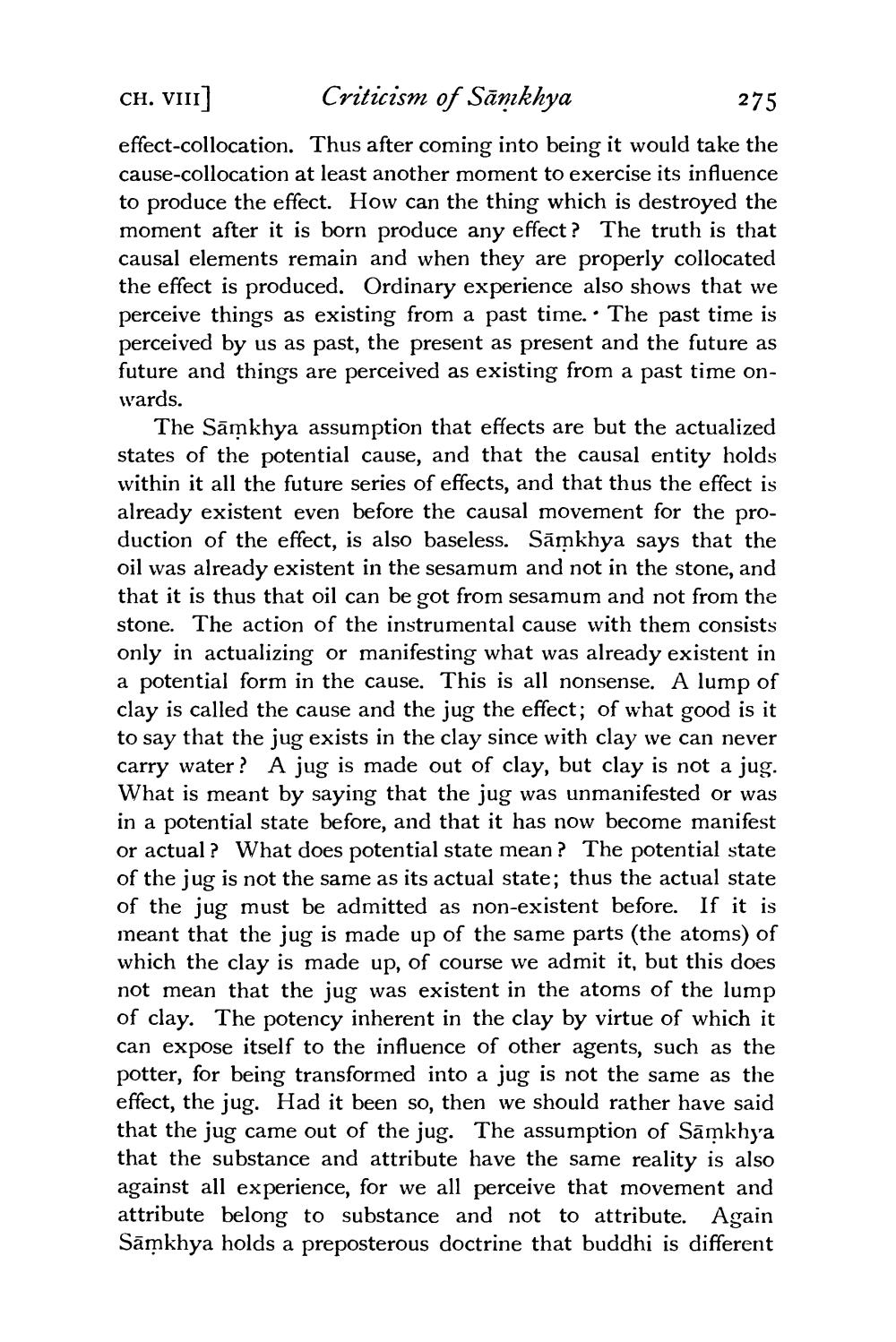________________
CH. VIII]
Criticism of Sānkhya
275
effect-collocation. Thus after coming into being it would take the cause-collocation at least another moment to exercise its influence to produce the effect. How can the thing which is destroyed the moment after it is born produce any effect? The truth is that causal elements remain and when they are properly collocated the effect is produced. Ordinary experience also shows that we perceive things as existing from a past time. • The past time is perceived by us as past, the present as present and the future as future and things are perceived as existing from a past time onwards.
The Sāmkhya assumption that effects are but the actualized states of the potential cause, and that the causal entity holds within it all the future series of effects, and that thus the effect is already existent even before the causal movement for the production of the effect, is also baseless. Sāmkhya says that the oil was already existent in the sesamum and not in the stone, and that it is thus that oil can be got from sesamum and not from the stone. The action of the instrumental cause with them consists only in actualizing or manifesting what was already existent in a potential form in the cause. This is all nonsense. A lump of clay is called the cause and the jug the effect; of what good is it to say that the jug exists in the clay since with clay we can never carry water? A jug is made out of clay, but clay is not a jug. What is meant by saying that the jug was unmanifested or was in a potential state before, and that it has now become manifest or actual? What does potential state mean? The potential state of the jug is not the same as its actual state; thus the actual state of the jug must be admitted as non-existent before. If it is meant that the jug is made up of the same parts (the atoms) of which the clay is made up, of course we admit it, but this does not mean that the jug was existent in the atoms of the lump of clay. The potency inherent in the clay by virtue of which it can expose itself to the influence of other agents, such as the potter, for being transformed into a jug is not the same as the effect, the jug. Had it been so, then we should rather have said that the jug came out of the jug. The assumption of Sāmkhya that the substance and attribute have the same reality is also against all experience, for we all perceive that movement and attribute belong to substance and not to attribute. Again Sāmkhya holds a preposterous doctrine that buddhi is different




